| |
|
|
|
|
 |
|
Like us and follow us on Facebook for availability updates and tips on bamboo growing and management.
|
|
|
| |
|
|
|
|
Bamboo Grown in Northern Indiana, USDA Zone 5 / 5b
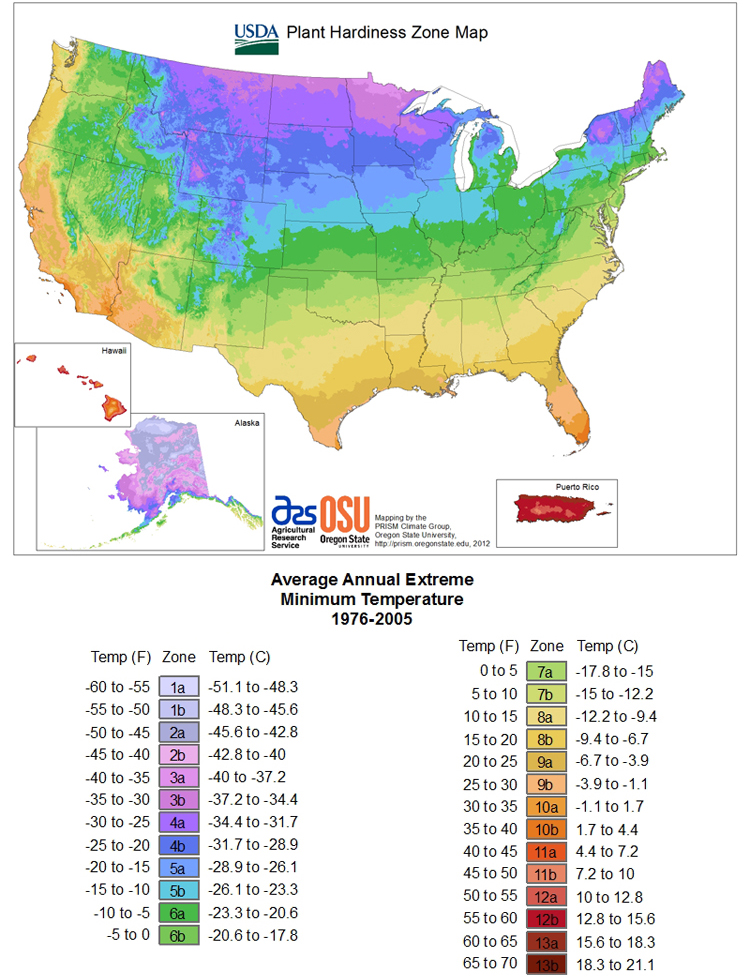
Cold Hardy Bamboo Winter Reports -
More Winter Data The below link is a pdf sheet that details winter temperatures, wind speeds, and top kill data per species.
Winter data sheet PDF
Winter of 2016 / 2017 Currently the coldest temperature we have experienced so far is -16ºF. The wind has been the main concern this winter.

Above: Photo from late November 2016. Three species of cold hardy bamboo in the snow. Phyllostachys bissetii (left), Phyllostachys nuda (background center), and Phyllostachys aureosulcata 'Spectabilis' (right). Of the three, nuda and bissetii are the most cold hardy.
Certain bamboo such as the less cold hardy species in the genera Pseudosasa and Semiarundinaria have wind burned, but that's typical for our zone. They readily regrow in the spring.
The smell of disiccation is very noticeable throughout the garden. Desiccated bamboo smells strongly of cut hay that has been rained on. The smell is not an unpleasant one.
There is wind burn on some of the hardier species in the genus Phyllostachys as well. Only time will tell the extent of the wind burn. Hopefully there will be no twig damage or top kill on these species this year.
The below six photos are of different species of bamboo displaying varying degrees of winter damage.
Though we haven't had excessively harsh temperatures, the wind has been mostly out of the west and south. Our west windbreak is lacking. You can see here the importance of siting your bamboo out of winter wind.
Strong winds during the time of the year when the air is dry, the soil is frozen, and the plant's metabolism is slow, can cause desiccation and top kill; though they will return from the roots in the spring.
The photo of Phyllostachys aureosulcata 'Spectabilis' is representative of what all of the aueosulcata clones have done this winter. They have severe wind burn, defoliation, and possibly top kill.
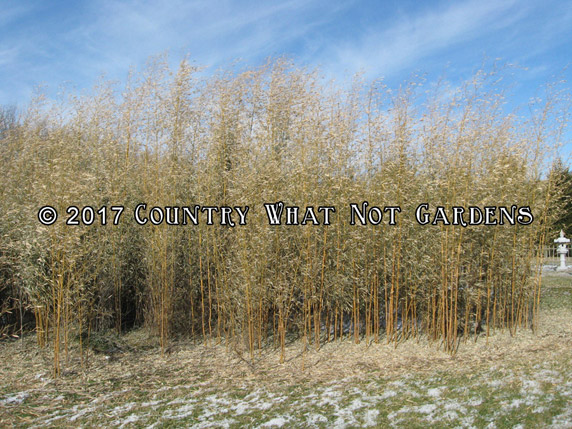
Phyllostachys aureosulcata 'Spectabilis' 1-30-2017
Phyllostachys bissetii and P. nuda have wind burn and some defoliation. It remains to be seen if there is top kill.
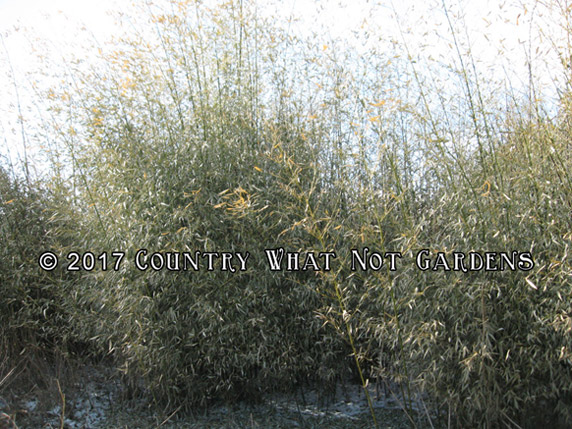
Phyllostachys bissetii 1-30-2017
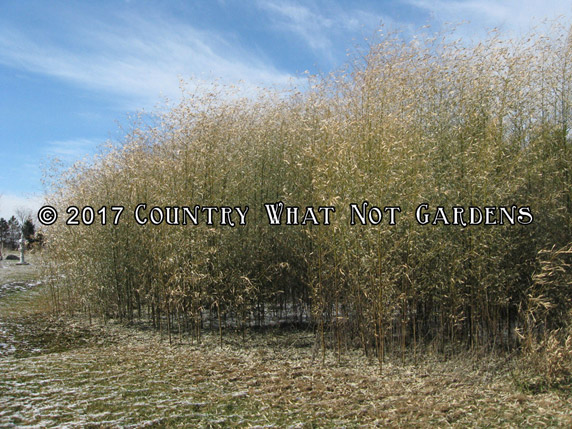
Phyllostachys nuda 1-30-2017
Arundinaria gigantea has completely top killed as it usually does here. Its ecotype called 'Macon' still has live, green leaves hanging on. 'Macon' is by far the most cold hardy bamboo we have grown.
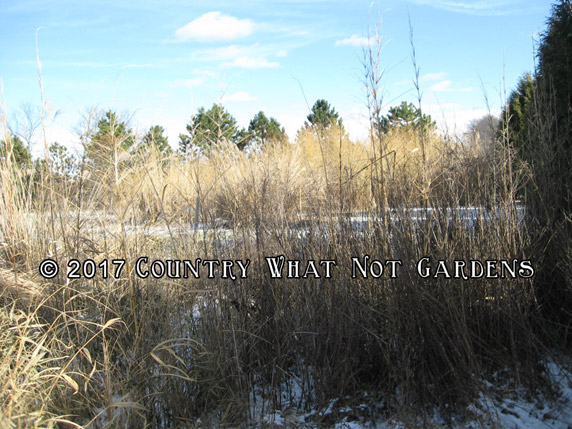
Arundinaria gigantea 1-30-2017
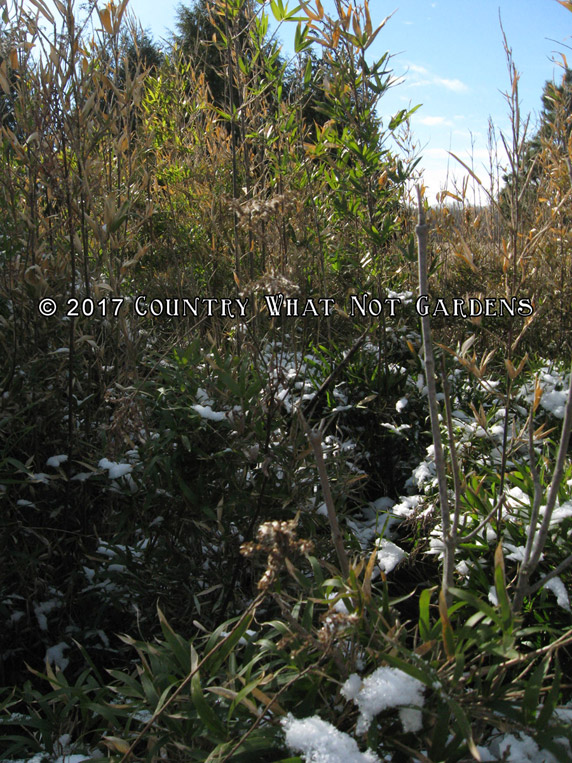
Arundinaria gigantea 'Macon'
1-30-2017
The snow line we had at the time of the -16ºF cold period can be seen on the small patch of Pleioblastus distichus. There are still live leaves below the snow line. This small species can be simply mowed down to remove the winter damage before new growth begins in the spring.
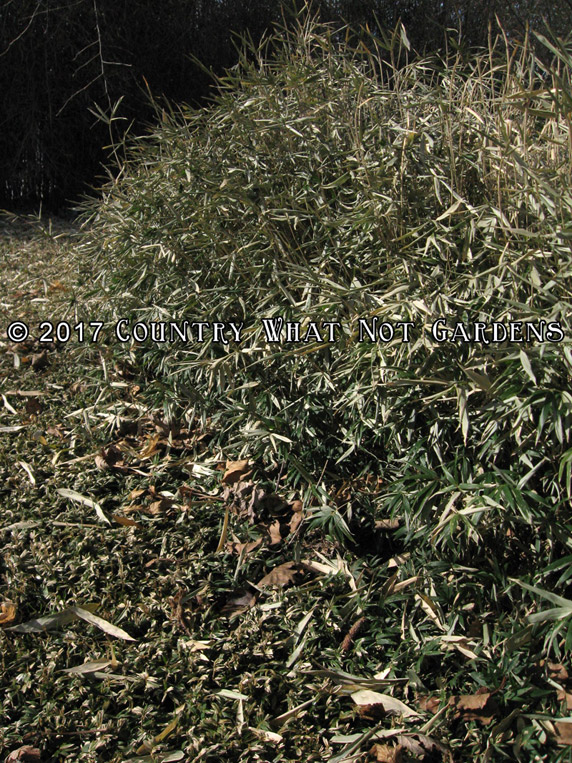
Pleioblastus distichus
1-30-2017
The winter of 2015 / 2016 was uneventful in terms of cold temperatures and wind. There was no top kill on any of the Phyllostachys species. The spring of 2016 brought increased height in all of the groves.
The winter of 2013 / 2014 was especially harsh and one for the record books. Such a winter in our region could not be recalled in living memory. The great lakes were nearly 100% covered in ice. Cold temperatures of -20ºF together with severe wind chills of less than -50ºF were not just frequent but were also sustained for long periods due to the polar vortex that swept across much of the US this winter. Our bamboo had not encountered such a winter since we began growing our first species, Physllostachys bissetii, in 1997. All of the bamboo was damaged to some degree during this brutal winter. New growth will return in the spring. The culms are still green below where the snow line was during the most severe cold. The below photo shows a 20 foot tall grove of Phyllostachys nuda as it looked on March 25th, 2014.
As you can see the foliage is severely wind burned and desiccated. As is the small planting of Pleioblastus distichus in the foreground beneath the birch tree. Some of the culms in the interior of the P. nuda grove, despite the grove only being a little over six feet in depth, appear to have minimal damage aside from leaf burn. I'll give an update on future growth later this spring.
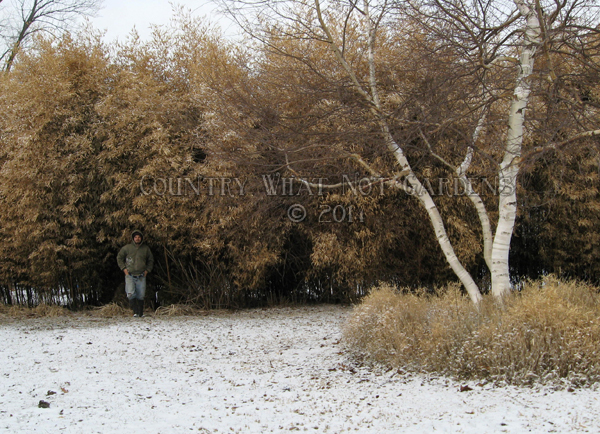
By June 19th of 2015 the renewed growth had resulted in a much different looking grove. The height shown here is approximately 25 feet.
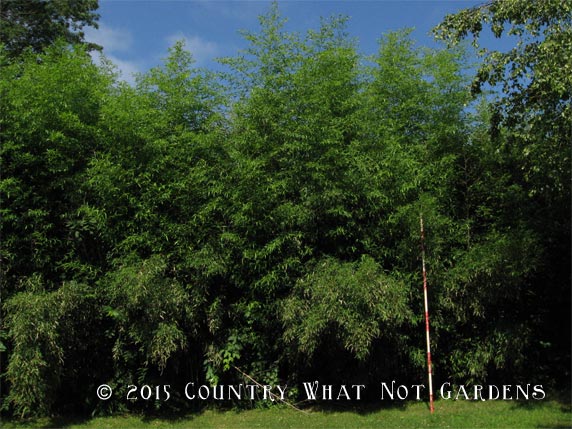
This photo from July 2016 shows the 60 foot long bamboo fence that was constructed using the cured culms from the 2014 winter top kill.
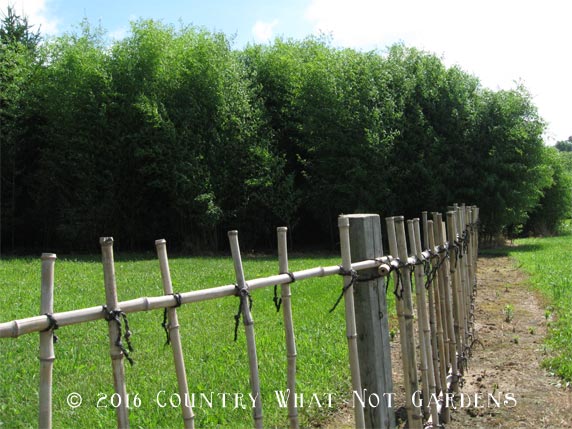
|

